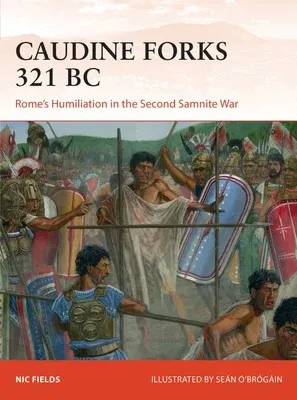A highly illustrated account of one of Ancient Rome's most humiliating
defeats, the battle of the Caudine Forks in 321 BC, and how the
embarrassment spurred the Roman Army on to eventual triumph.
In its long history, the Roman Republic suffered many defeats, but none
as humiliating as the Caudine Forks in the summer of 321 BC. Rome had
been at war with the Samnites--one of early Rome's most formidable
foes--since 327 BC in what would turn out to be a long and bitter
conflict now known as the Second Samnite War. The rising, rival Italic
powers vied for supremacy in central and southern Italy, and their
leaders were contemplating the conquest of the entire Italian peninsula.
Driven by the ambitions of Titus Veturius Calvinus and Spurius Postumius
Albinus, Roman forces were determined to inflict a crippling blow on the
Samnites, but their combined armies were instead surprised, surrounded,
and forced to surrender by the Samnites led by Gavius Pontius. The Roman
soldiers, citizens of Rome to a man, were required to quit the field by
passing under the yoke of spears in a humiliating ritual worse than
death itself.
This new study, using specially commissioned artwork and maps, analyses
why the Romans were so comprehensively defeated at the Caudine Forks,
and explains why the protracted aftermath of their dismal defeat was so
humiliating and how it spurred them on to their eventual triumph over
the Samnites. With this in mind, this study will widen its focus to take
account of other major events in the Second Samnite War.

